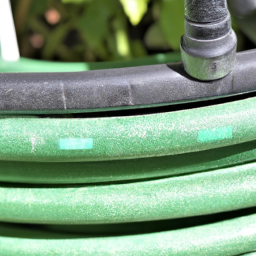Garden Hose Flow Rate How Many Gallons Per Hour
Table of Contents []
How Many Gallons Per Hour Is A Garden Hose
Introduction
It can be quite confusing understanding how much water is truly coming out of your garden hose on a per-hour basis. Sure, you might just come up with your own guess but wouldn't it be better to understand the math behind it? Doing so would not only help you to understand how much water you'll actually be using, but also help your wallet in the long run. This brief article will go into the details of how many gallons of water per hour a garden hose will put out, as well as some other related topics.
Flow Rate of Garden Hose
The rate of flow of water through your garden hose is largely dependent on the size of the hose and the pressure of the water coming out. A basic garden hose is about 5/8 of an inch in diameter and with an optimal pressure of 50-60 PSI, will provide roughly 9-10 gallons of water per minute. While this seems like a lot, it translates to only about 0.4 gallons of water per minute when working out the math. This is useful information but it does assume you have an ideal pressure set-up and garden hose diameter, which may not be realistic.
Factors Affecting Flow Rate
The primary factor affecting the flow rate of water coming out of a garden hose will be the diameter of the hose, as previously mentioned. The thinner the hose, the lower the flow rate as there is less room for water comes out. Aside from diameter, the water pressure is also key. The higher the pressure, the greater the flow rate. However, you don't want to push the flow rate too much, as it may put strain on the hose and lead to cracks and leaks.
Other Relevant Factors
Beyond flow rate and pressure, there are other factors to consider when looking at water use with a garden hose. Your temperature climate will largely dictate how much water you need; warmer climates will require more water for your garden than cooler climates. Additionally, the type of plants will also be important; annuals generally need more water than perennials.
Proper Maintenance
If you can't take time to properly maintain your garden hose, then it may not be used optimally in the future. Proper maintenance includes choosing the correct hose for your needs, checking for kinks before use, and storing it properly after use. If you get a new garden hose, be sure to water it down before you use it to relieve any air pressure buildup. This will ensure maximum potential performance and no leaks or ruptures.
Summary
In summary, understanding the rate of flow and other key factors related to your garden hose can help make sure you're not overusing water. Investing some time to select the right hose and ensuring proper maintenance will not only result in better performance, but also a lower water bill. It's important to understand how much water you're using per hour, as well as the various factors that will affect the flow rate, so that you're not spending more than necessary for your garden.

Previous Page
Next Page
